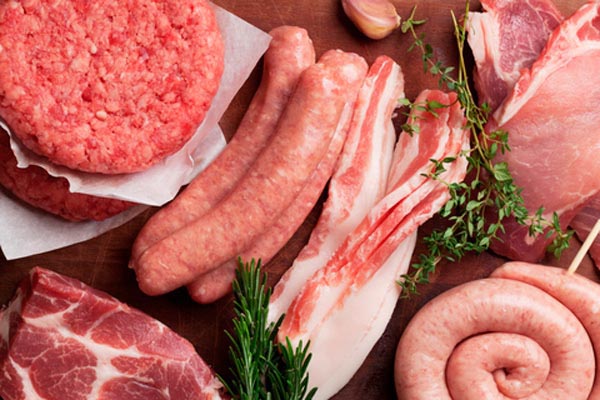China meat market worries analysts
China is one of the main factors that worries analysts, with implications for the whole red meat industry.
According to the latest market commentary from Quality Meat Scotland (QMS), in addition to Brexit, there have been other topics dominating the discussion about international trade in red meat in 2021. One is the ongoing impact of the changing pork market conditions in China.

Senior Economics Analyst, Iain Macdonald, says that China’s pork market has been through a highly volatile period since the major African Swine Fever (ASF) epidemic of 2018/19.
“According to the USDA, production fell from an average of 54m tons in 2016-18 to 43m tons in 2019 and 35m tons in 2020. To help ease the supply shortage, China’s pork imports surged from a 2016-18 average of 1.66m tons to 2.45m tons in 2019 and 5.28m tons in 2020.mWith this surges unable to fill the gap in overall protein demand in China, imports of beef, lamb and chicken also soared. For example, USDA figures point to a doubling of China’s beef imports between 2018 and 2020, reaching 2.78m tons.”
The severe shortage of supply caused market prices to surge in 2019 and remained elevated until early 2021. “Wholesale pork climbed from around 18 yuan/kg (?2.10/kg) in March 2019 to a peak of 52 yuan/kg (?6.10/kg) in November 2019, before fluctuating at 40-50 yuan/kg until early 2021. Prices on wholesale markets for beef, sheep meat and chicken also increased significantly,” said Mr. Macdonald.
These impacts were felt outside China, driving up livestock prices in the global market. This included the UK, where China went from accounting for around 20-25% of UK pork exports to over half in Q1 2021.
“However, between spring and autumn 2021, Chinese pork market conditions completely changed. By late August, wholesale pork prices had fallen below pre-ASF levels, and after China’s holiday period in October, they slipped below 18 yuan/kg, down over 60% from January,” explained Mr. Macdonald.
This reflected a quick rebound in local production, which had been incentivized by large profit margins in 2019 and 2020. However, as local production increased through the spring and summer, farmgate prices fell well below production costs, encouraging herd liquidation.
This liquidation then sped up the production rebound, placing further downwards pressure on the market. Chinese trade data showed a sharp reduction in imports in the summer, highlighting an adequately supplied market and contributing to reduced prices across the world.
“Things quickly changed again in October. Wholesale pork prices jumped 35% in just five weeks, and they closed November around 18% above the 2016-18 average, at 24.5 yuan/kg (?2.90/kg). It is likely that the market quickly became under-supplied because of local production rebalancing lower after the liquidation cycle plus the reduction in imports.
“One interesting feature of pork market volatility is that while beef and lamb wholesale prices were pulled higher by the protein shortages of 2019 and 2020, they did not readjust significantly lower again in 2021 in line with pork,” said Mr. Macdonald.
Sheep meat wholesale prices showed a modest dip between spring and summer but held well above pre-ASF levels, while beef prices appeared to be immune to the change in pork market conditions. In late November, beef and lamb traded at attractive levels for exporters on the Chinese wholesale market, equivalent to ?9.10/kg and ?8.30/kg respectively; both around 2% higher than last year. “It seems likely that reduced pork availability in 2019-20 led Chinese consumers to try alternative proteins more often, giving some degree of permanence to the lift in demand for beef and sheep meat, while pork demand may not have fully recovered. Indeed, the USDA projects that pork consumption will remain 10% below 2016-18 levels this year and by 13% in 2022,” explained Macdonald.
Currently, the USDA is forecasting beef import growth of 8% both this year and next, while pork imports are projected to fall 15% this year before partially recovering in 2022, up 6%. FAO/OECD forecasts point to sheep meat consumption growth of 1% in 2021 and 2022, with imports 40% above their 2016-18 average.
Therefore, China will continue to offer a significant opportunity to its overseas suppliers of beef and sheep meat in 2022. Meanwhile, although below their peak, China’s pork import requirements are expected to remain elevated at nearly three times their 2016-18 average.
“The volatility in the Chinese market in recent years demonstrates how quickly global markets can shift, causing large knock-on effects which are difficult to plan for,” said Mr. Macdonald.
Source: meatinfo